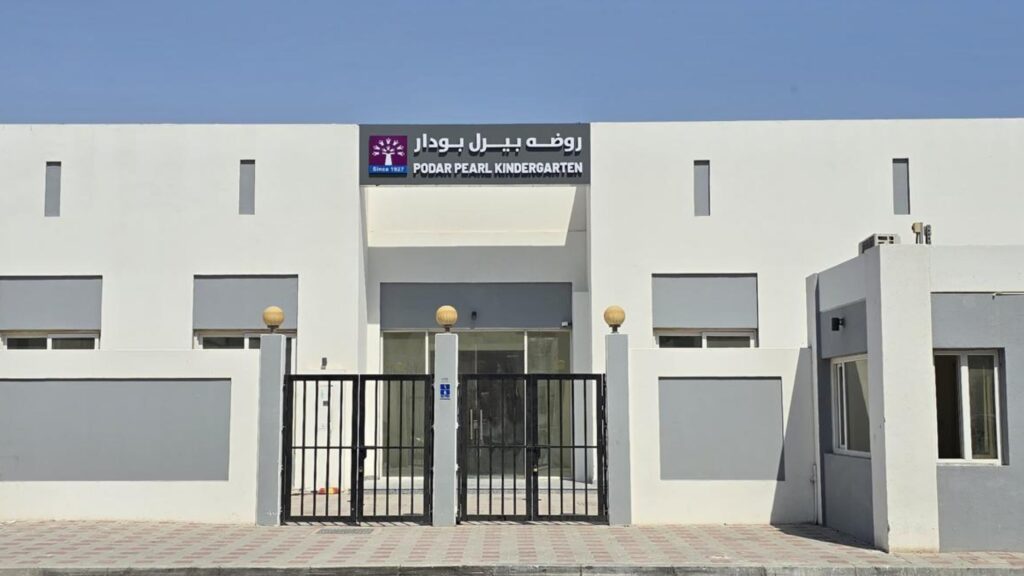ACADEMIC PROGRAM - MADINATNA
Kindergarten 1
Language and Communication
The program builds communication skills through expressive rhyme recitation, picture-letter matching, storytelling, and personal narration. These activities strengthen vocabulary, listening, and speaking fluency.
Physical Development
Gross motor skills are developed through running, climbing, balancing, parachute play, and yoga. Fine motor skills are enhanced with playdough work, pencil grip practice, tracing, buttoning, lacing, and scissoring activities.
Personal, Social, and Emotional Growth
Children learn to follow multi-step instructions, share, take turns, and role play with peers. They also develop responsibility for belongings and practice expressing emotions appropriately.
Literacy – Symphonics
Phonics learning introduces letter sounds in a structured sequence: s, a, t, p, n; o, c, k, ck, g, r, b; i, l, d, f, h; e, m, v, j, w. Students practice recognizing sounds, identifying beginning sounds, drawing related pictures, and writing with correct left-to-right progression.
Mathematics – Number Magic
Numeracy development includes rhythmic counting from 0–80, number recognition up to 32 using tiles and tokens, sequencing, before-and-after concepts, and early place value. Shape recognition covers both 2D and 3D forms such as circles, squares, triangles, pentagons, rhombuses, and stars. Color learning involves identifying ten basic colors, understanding mixing, and applying concepts through drawing.
Implementation and Assessment
Daily sessions integrate literacy, numeracy, physical play, and creative exploration. Resources include storybooks, flashcards, and manipulatives. Continuous assessment is conducted through observation, performance tasks, and work samples to track individual progress.
Kindergarten 2
Language and Communication
Children are encouraged to speak in English and express their views clearly. Activities include picture talks, rhyme recitation, attentive story listening, and group discussions to strengthen vocabulary, comprehension, and fluency.
Physical Development
Gross motor skills are refined through climbing, balancing, patterned walking, running, and jumping. Fine motor skills are built through freehand drawing, tracing, scissoring, buttoning, lacing, and creative play with peg shapes and materials.
Personal, Social, and Emotional Growth
Learners follow two- and three-step instructions, share and cooperate with peers, and retain new ideas effectively. They practice independence in dressing, identify personal details such as name, age, and family, and engage in safe practices without supervision. Play-based activities include sand play, parachute games, playdough use, punching, and sticking exercises.
Literacy – Symphonics
Children articulate letter sounds, establish sound-symbol connections, and write letters: Ss, Aa, Tt, Pp, Nn; Ii, Ll, Dd, Ff, Hh; Oo, Cc, Kk, Gg, Rr, Bb; Ee, Mm, Vv, Jj, Ww. They begin reading sight words and short sentences, copy their names, and develop correct writing habits including left-to-right progression, tripod grip, and three-line writing. They progress to writing three- and four-letter words.
Mathematics – Number Magic
Numeracy covers reciting, counting, and writing numbers from 0–100 with rhythmic movements and pattern-based activities. Learners practice missing numbers, sequencing (in 10s, up to 50 and 100), ascending and descending order, and one-digit addition. Place value concepts extend to Hundreds, Tens, and Ones using the Place Value House. Further skills include ordinal numbers 1–10, skip counting in 5s and 10s, and pattern-building with objects and shapes. Concepts of capacity, weight, and measurement are introduced. Shape recognition spans 2D and 3D forms: circle, square, triangle, rectangle, oval, hexagon, octagon, pentagon, heptagon, heart, diamond, star, cube, sphere, cone, and cylinder.
Colours
Children recognize rainbow colours (VIBGYOR), secondary and tertiary colours, as well as tints and shades, reinforcing visual learning and creative expression.
Implementation and Assessment
The program is structured around daily sessions integrating literacy, numeracy, physical activity, and creative play. Learning resources include Number Magic tools, flashcards, storybooks, and manipulatives. Continuous assessment is conducted through observation, hands-on performance, and written tasks to ensure steady progress.
Pedagogical Approach: Learning is anchored in play-based, phonics-driven, and hands-on methods that make abstract concepts concrete. Storytelling, inquiry, and collaborative projects build communication, reasoning, and creativity. Movement, art, and experiential tasks ensure balanced physical, social, and cognitive growth.

